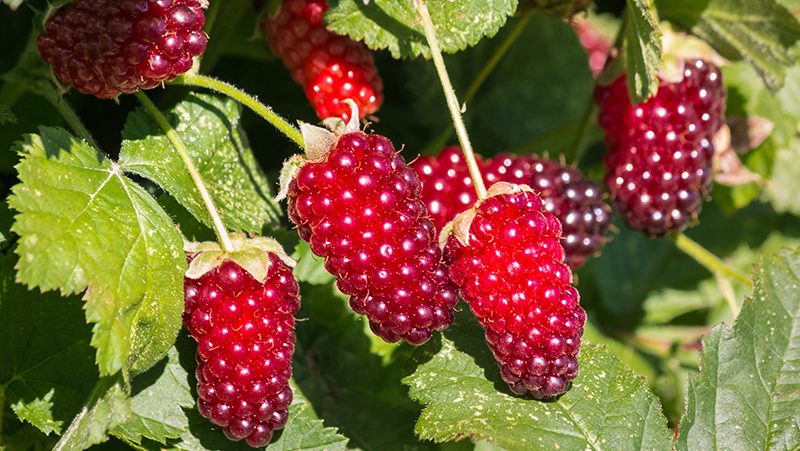Yates Account
Join now
Create a Yates account today!
Sign up to join the Yates Garden Club for monthly e-mails packed with seasonal inspiration, tips for success & exclusive promotions.
Plus if you’re a Garden Club member you can take part in the Yates Growing Community - a blog to share successes, get advice & win prizes in fun challenges along the way!

Forgot password
Enter the email address associated with your account, and we'll email you a new password.

They’re incredibly juicy and worth growing at home, especially as they’re difficult to find in store. The canes can grow up to 2m tall and 3m wide, but they can be cut back to help keep them compact. For best fruiting potential, grow in cool-temperate or cold climates.
How to grow loganberries in a garden
- Choose a sunny spot with well drained soil and ensure there is protection from the hot afternoon sun and strong winds. Enrich the soil with Yates Dynamic Lifter Organic Plant Food. If the soil is clay based, add gypsum and fork in well.
- Install a trellis or support system, with wires running between two stakes at waist and shoulder height. This will help support the canes as they grow.
- Dig the planting hole twice as wide and to the same depth as the container. Remove the canes from pot, position two canes in the same hole and backfill with soil, gently firming down. If planting more than one plant, ensure you space them at least 1.5m apart.
- Water in well after planting to settle the soil around the roots and keep the soil moist for several weeks while the new plant establishes.
- Mulch with an organic mulch, such as bark chips, woodchip or pea straw ensuring to keep it away from the canes.
- During the growing and flowering/fruiting season, feed with Yates Thrive Citrus & Fruit Granular Plant Food.
TIP: for an added boost during the flowering/fruiting season, apply Yates Thrive Strawberry & Berry Fruit Liquid Plant Food. - As the canes grow, loosely tie any fruiting canes to the top wire, and tie the newer canes (with no fruit) to the wire below.
- In autumn, cut back the older canes (the ones sitting on top) to ground level. Untie canes from the bottom wire and retie them to the second wire. Repeat this process yearly to help keep the canes under control.
- At the end of autumn and the start of spring, apply Yates Dynamic Lifter Organic Plant Food and Yates Nature's Way Organic Compost & Soil Improver to enrich the soil.

Growing tips
-
Fruit can get spoilt from extreme heat and sunshine. Cover with shadecloth to protect the fruit – it also helps keep birds away from your harvest!
- Look out for thornless varieties of loganberry which will create a much less painful berry growing experience!














Share
Share this article on social media